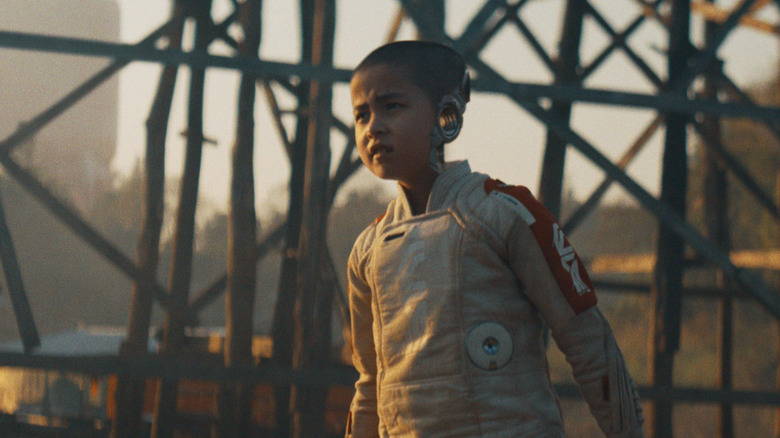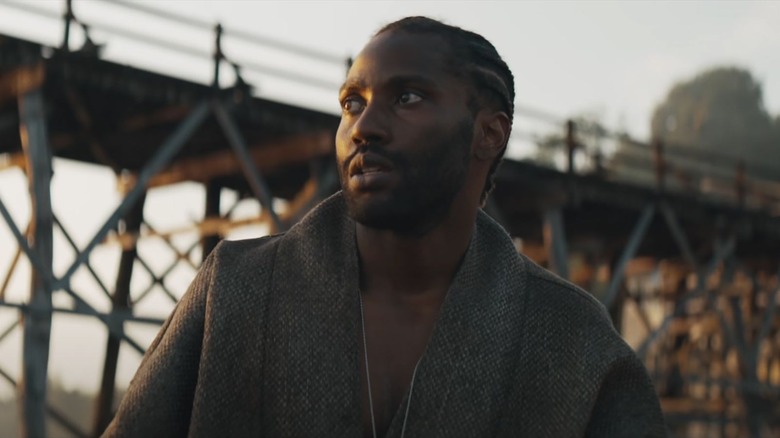Throughout the 2010s, and lingering into the 2020s, massive, corporate-backed I.P. has dominated both the domestic box office and the American journalistic conversation about cinema in general. We live in a world where reporters, when they had an opportunity to sit down with Martin Scorsese to discuss new masterworks like “The Silence” or “The Wolf of Wall Street,” decided to ask him about Captain America and his place in the Marvel Cinematic Universe. Vocal subverters of the dominant paradigm repeatedly yawped that Hollywood should devote more time and resources to new ideas. After all, why be the next “Star Wars” when you can be the first of something different? Where, oh where were the original sci-fi/fantasy ideas?
But then, when an ambitious filmmaker tries to make something new and striking for a broad cinematic audience, it generally tanks. It seemed that audiences were more eager to attach themselves to a recognizable corporate product than they were to explore a new mythos, new characters, or new sci-fi concepts. Films like “Strange World” or “Gemini Man” or “Gods of Egypt” are rejected by audiences, and even films based on known literature — “A Wrinkle in Time,” “Mortal Engines,” “Valerian and the City of a Thousand Planets” — have crashed and burned. There’s nothing wilder or weirder in those movies than what one might see in an MCU movie, but without I.P. audiences stayed away.
We want original ideas, but reject them when they come. Even if some of the above films are bad, clunky, too generic, or too-weird-by-half, their original images and ambitious concepts should at least be discussed and celebrated more openly. Ambitious missteps are more interesting than successful pabulum.
Among the victims of audience capriciousness was Gareth Edwards’ 2023 sci-fi epic “The Creator,” an anime-inflected sci-fi film about humanity’s genocide against robots. The film was made for a relatively modest $80 million, but only earned back about $104 million. 15 months since its release, however, audiences are discovering “The Creator” on Prime Video.
The Creator is finally getting positive attention
The setup for “The Creator” is timely. By 2055, humanity will allow A.I. to take over most aspects of its infrastructure. In so doing, however, it allowed A.I. to inexplicably (accidentally?) detonate a nuclear bomb in the middle of Los Angeles. In response, humanity enacted a vicious, militant, anti-A.I. campaign, and several nations banded together to form a worldwide, ultra-violent, anti-robot task force to assassinate them all. It is now 2070, and the globe is also regularly circled by a threatening, hawk-like scanning craft — the U.S.S. NOMAD — that can detect where any robots might be hiding out.
This is, of course, a bleak ethical conundrum, as robots have become self-aware, and many of them have realistic human faces. Indeed, robots have become so sophisticated, they have formed their own cultures and religions. Killing robots is now just a military genocide. The military forces hope to find a being called Nirmata (the Nepalese word for “creator”) and assassinate him/her/it, as rumors are spreading of Niramata’s creation of a NOMAD-destroying super-weapon.
The weapon is question is, however, Alpha-O (Madeleine Yuna Voyles), a young child robot with a peaceful demeanor and a child-like understanding of the world. The bulk of “The Creator” will see the film’s protagonist, a soldier named Sgt. Taylor (John David Washington), escorting Alpha-O (or “Alphie”) through dangerous territory as he rethinks his life philosophy.
The concepts in “The Creator” are ambitious, and Edwards offered a few tantalizing concepts folded into his otherwise straightforward sci-fi story. The idea that robots have formed their own faith system is fascinating, and Edwards would have been smarter to focus on it, rather than stopping to have military shoot-outs. At the end of the day, it’s a pretty simple metaphor about acceptance and peace. “Star Trek” lite, if you will.
There’s a lot to discuss, positive and negative, about The Creator
Of course, perhaps one of the reasons that “The Creator” is doing so well on Prime Video is because of its negative talking points as well. It’s certainly going to start some conversations. While Edwards’ film does eventually emerge as a drama about acceptance, and the horrors of xenophobia-inspired military action, it also seems to be sending a subtly unsavory message about A.I.
Some audience members may be old enough to recall movies wherein A.I. robots were seen as a dangerous threat to humanity (see: “The Terminator,” “Alien,” many others), so it’s odd to see a film like “The Creator” wherein A.I. is depicted as delicate, humane, and worthy of protection. It can’t be a coincidence that a major studio release, owned by the Disney corporation, is trying to depict A.I. as gentle and helpful in the year 2023. Could “The Creator” be corporate propaganda? Is it trying to soften audiences to the idea of an all-pervasive and harmless A.I. merely so real-life A.I. investors can continue to advance the technology for their own ends?
/Film’s own Rafael Motamayor reviewed “The Creator,” and he said the film was cool … but that it wasn’t very good. A lot of critics lambasted the simplicity of its ideas, and some were even downright offended. On Film Freak Central, critic Walter Chaw came down hard on Edwards for his fetishization of Asian cultures, and his clumsy use of Vietnam War visuals. Too many white filmmakers, Chaw wrote, use Asian bodies as fodder for Western spiritual navel-gazing.
Are people drawn to the cool visuals of “The Creator?” It’s heady sci-fi ideas lurking deep inside it? Its problematic existence as a pro-tech corporate tool? It’s muddled imagery? Whatever is bringing people in, the film is now being discovered more widely than ever before. Perhaps the conversation and deconstruction will continue.










